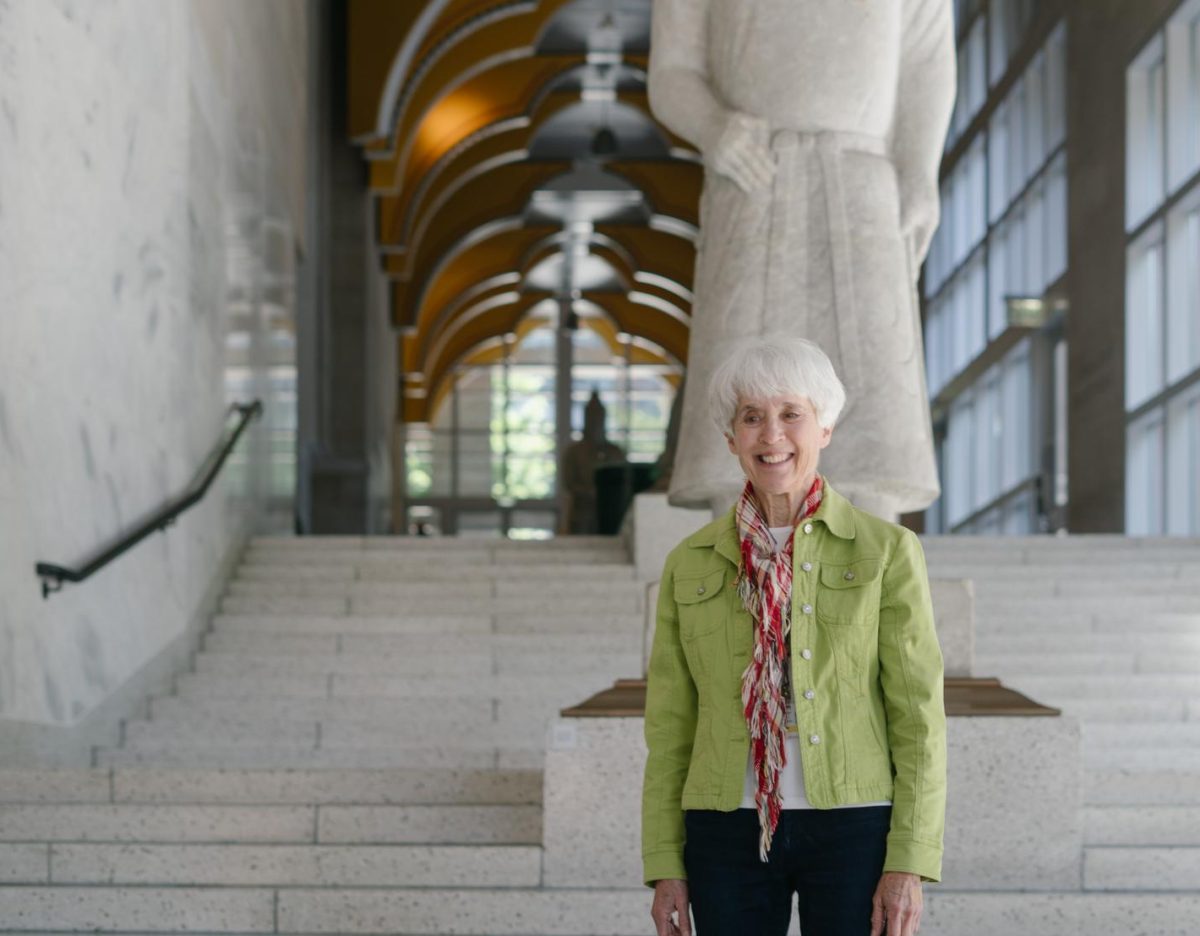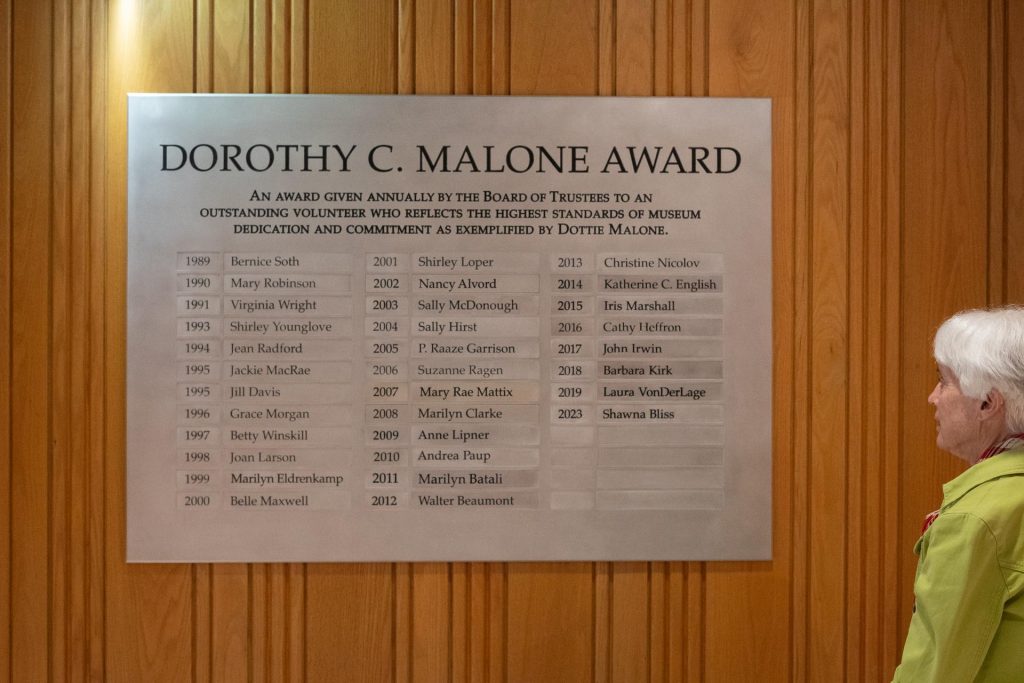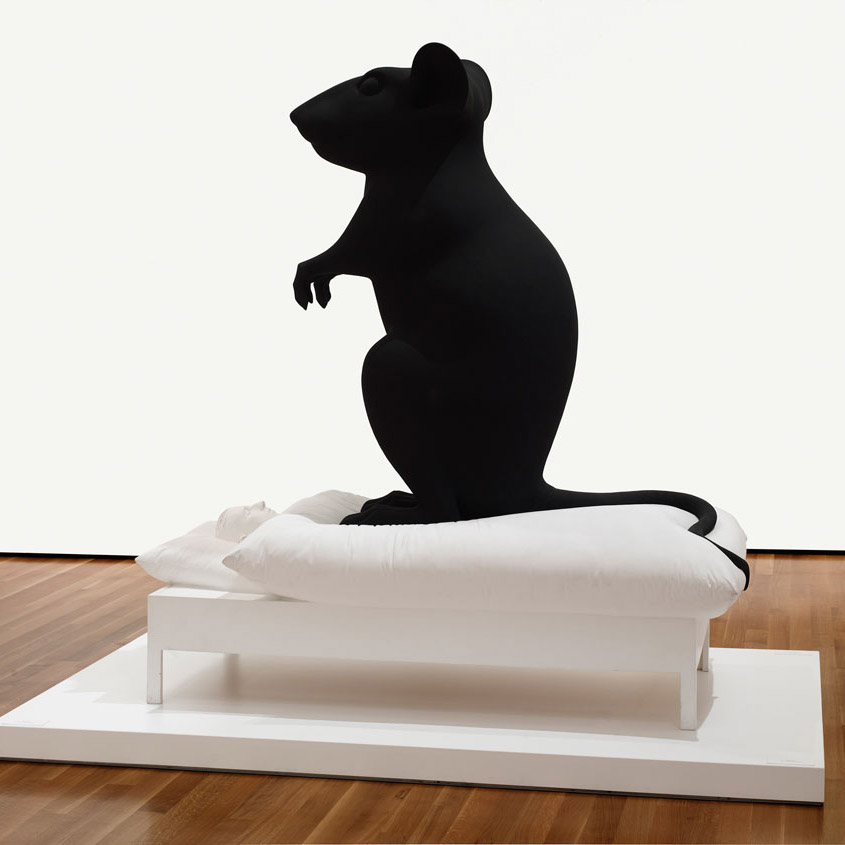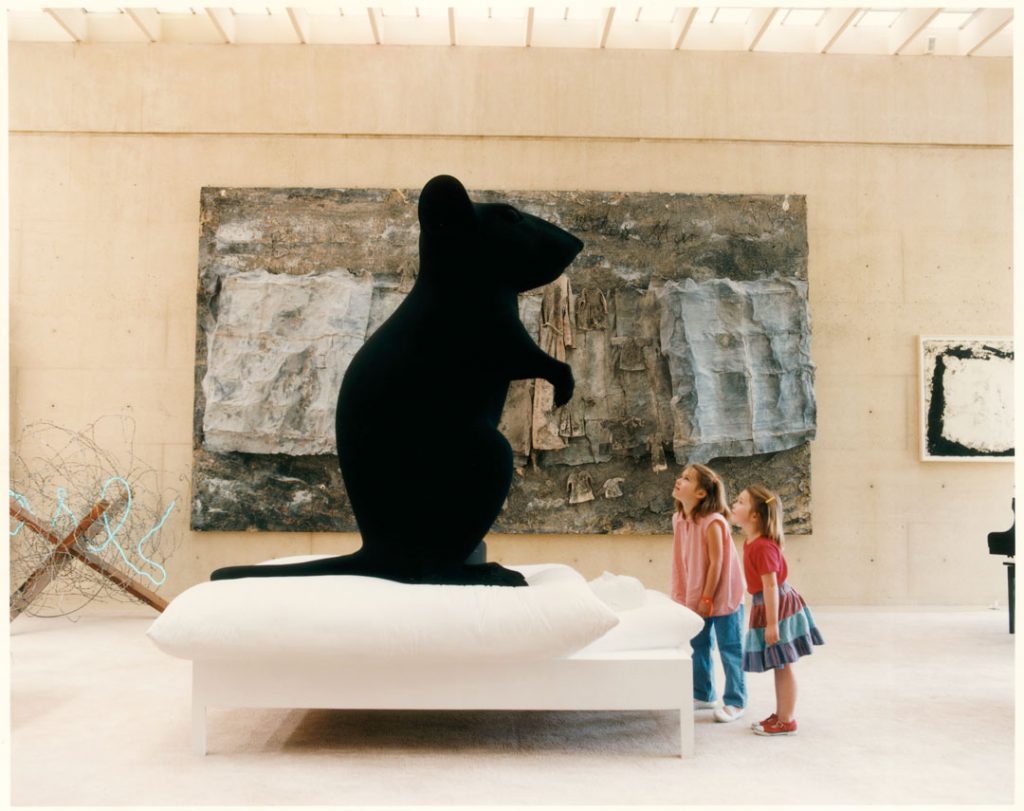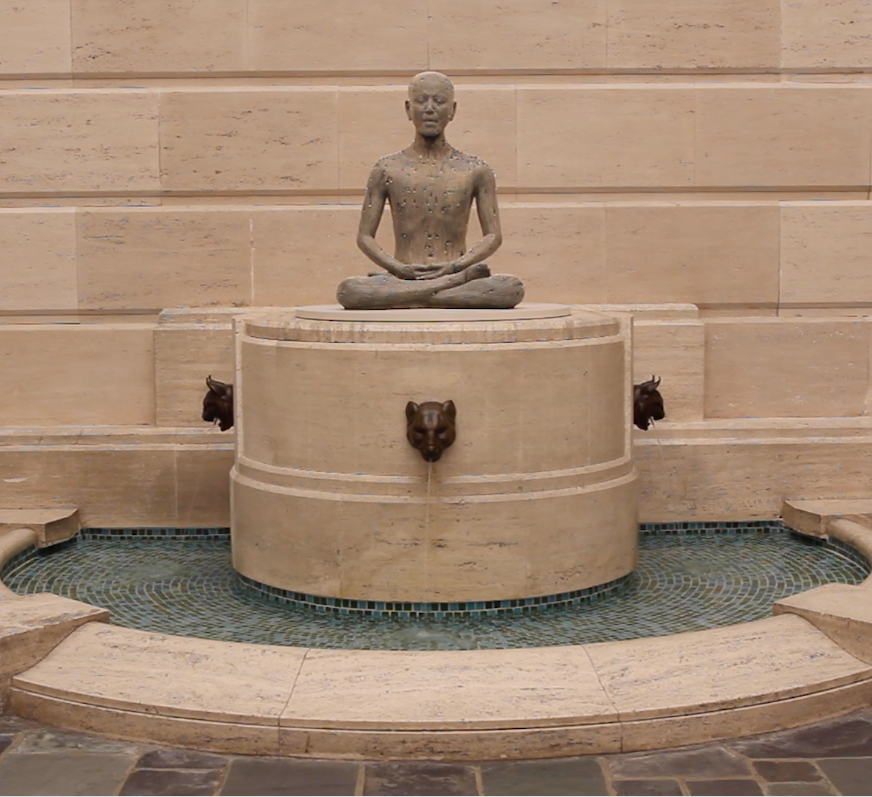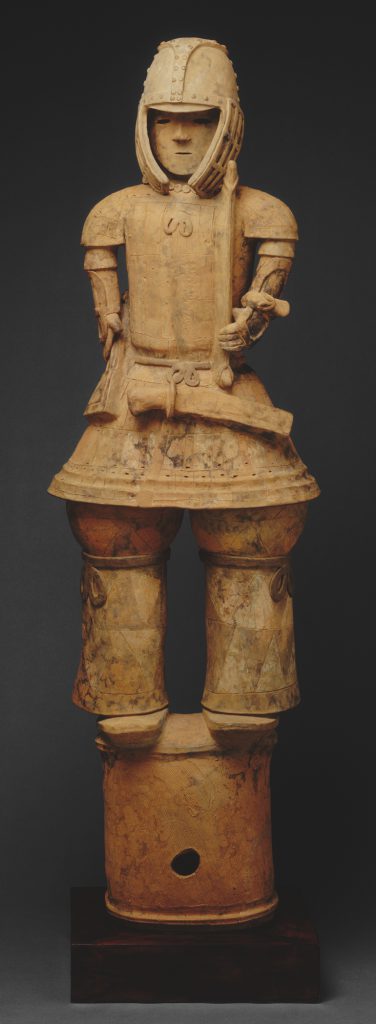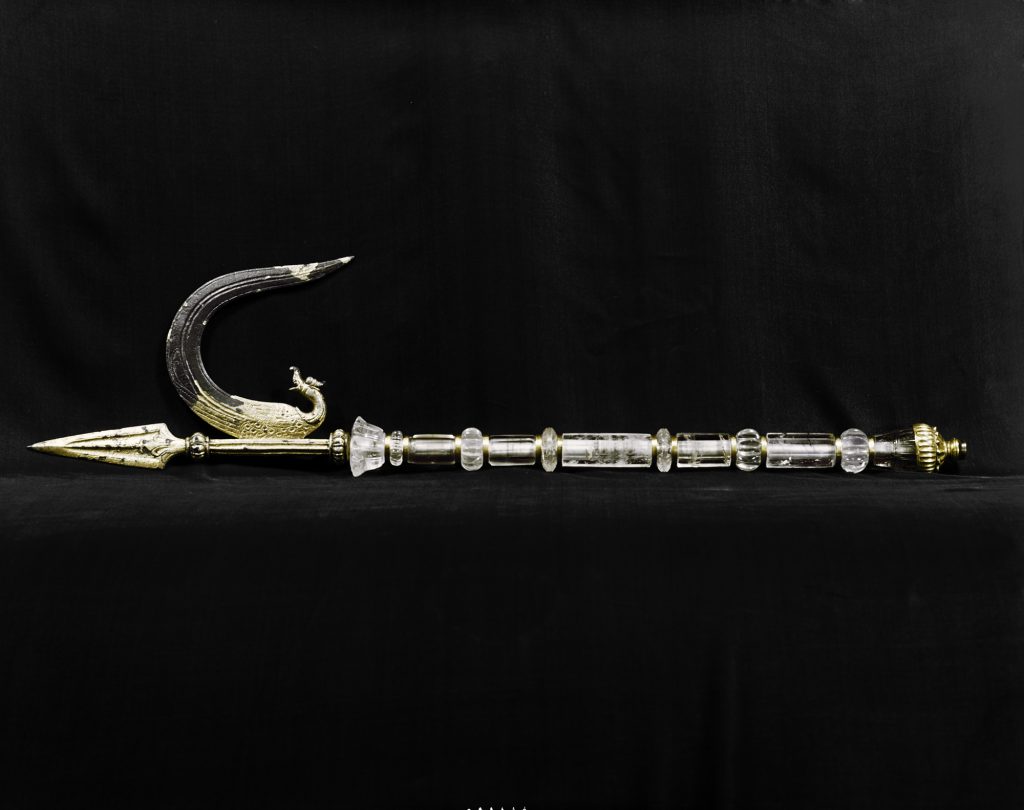Shawna Bliss Celebrates 24 Years of Service at SAM
Earlier this year, volunteers across all the Seattle Art Museum, Seattle Asian Art Museum, and Olympic Sculpture Park came together to celebrate another incredible year of service at SAM. Hosted by the Seattle Art Museum Volunteers Association Advisory Committee (SAMVA-AC), the 2023 Volunteer Soirée honored the landmark accomplishments of some of SAM’s longest-serving volunteers.
Of the many awards handed out that evening, none were as significant and surprise-filled as the Dorothy C. Malone Award. Established by the SAM Board of Trustees in 1989, the award is given to an exceptional volunteer who exemplifies the highest standard of dedication and service to the museum.
Dorothy “Dottie” C. Malone is a significant part of SAM’s history, having invested 63 years in the museum as a staff member and volunteer. She treated the museum as her family, taking a warm and personal interest in the staff, volunteers, and operations of the museum. She cared deeply and held the museum to a high standard of excellence. Her concern for volunteers, which she called “the backbone of the museum,” combined with her own dedication and commitment, inspired the Board of Trustees to establish this award in her name.
This year’s recipient of the Dorothy C. Malone Lifetime Achievement Volunteer Award is Shawna Bliss. A volunteer for over 24 years, Shawna currently volunteers in our docent program and has consistently contributed to the development of gallery learning across all three SAM locations. Born and raised in West Seattle, Shawna is the oldest of five siblings and discovered a passion for education at a young age. She received her bachelor’s degree in education and psychology from the University of Washington and completed her master’s in education at the University of Utah.
The following years saw Shawna traveling with her husband, Don, throughout the United States and Australia before settling into a long term home in Bremerton to raise their family. For many years, Shawna commuted from Bremerton to Seattle to volunteer at SAM, becoming one of the museum’s most prominent supporters. Family gifts often included museum memberships, invitations to view exhibitions and programs, and one-of-a-kind items from SAM Shop. She encouraged her siblings and children to visit SAM and often brought her parents downtown to explore the museum’s galleries.
Following our celebration of Shawna and her continued contributions to SAM, we asked her about her time at SAM and any advice she’d offer prospective volunteers. Read below to see what she had to say!
SAM: How did you learn about the opportunity of becoming a SAM volunteer? What was the process like for you to join?
Shawna Bliss (SB): I learned about the opportunity of becoming a SAM volunteer at an education job fair held in Seattle before the start of the 1999 school year. A SAM representative was promoting SAM’s education programs and volunteer opportunities. I completed a volunteer application, had an interview with SAM’s Manager of Volunteer Programs, and was hired to assist a SAM educator in the Art Studio.
SAM: What is your favorite memory of being a SAM volunteer?
SB: I have so many favorite memories of being a SAM volunteer! What keeps me at SAM year after year are the opportunities to work with, and learn from, other volunteers, SAM staff, and museum visitors.
SAM: Were you surprised to receive the Dorothy C. Malone Award? What was your reaction?
SB: I was totally surprised! 2019 was the last year SAM held its Volunteer Soirée, so I came to this year’s soirée expecting to celebrate “our” return to SAM. I was not expecting any of us to be personally recognized!
SAM: Why should people consider becoming a SAM volunteer?
SB: Do you like making new friends? There are many volunteer opportunities at SAM, all of which give volunteers occasions to meet and engage with like-minded people, including other volunteers, SAM staff, and visitors.
Do you like learning about art, artists, and connecting art to the lives of visitors? If so, there is always much to see, read, and think about at SAM.
Do you like SAM and support its mission, vision, and values? SAM volunteers do! Young or old, just getting started or having volunteered for decades, all of us take pride in representing SAM as we serve in our volunteer roles.
– Lily Hansen, SAM Marketing Content Creator
Photos: Chloe Collyer.
